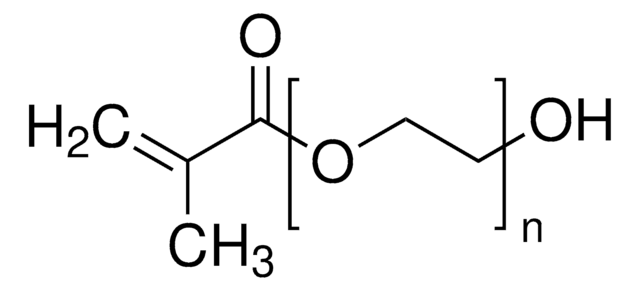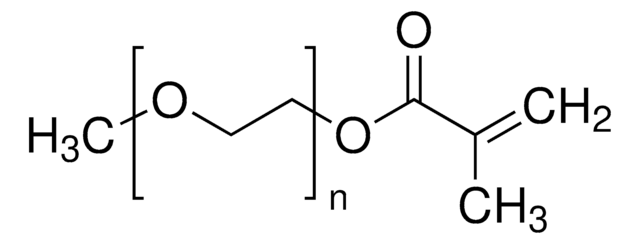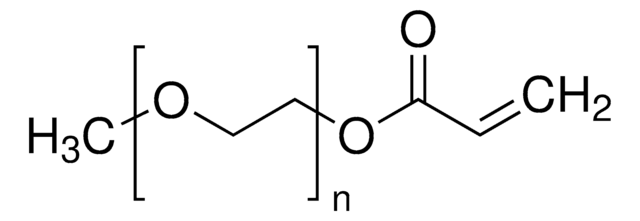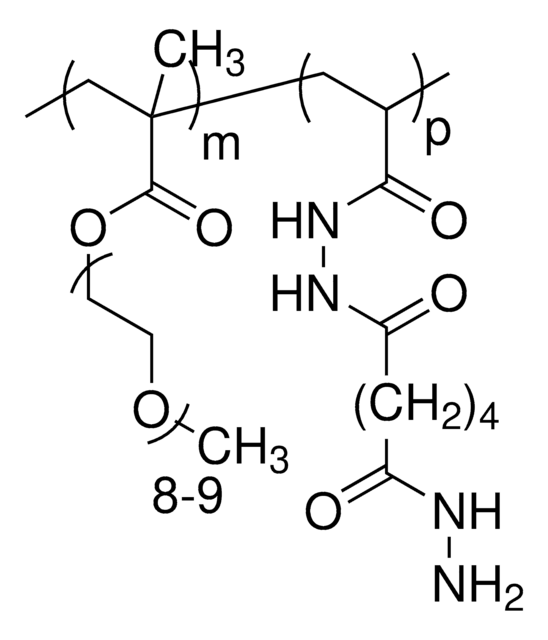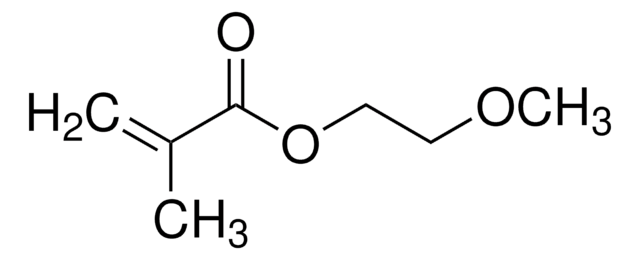409529
Poly(ethylene glycol) methacrylate
average Mn 500, methacrylate, 900 ppm MEHQ as inhibitor
Synonym(s):
Ethoxylated 2-hydroxyethyl methacrylate, Poly(oxy-1,2-ethanediyl), α-(2-methyl-1-oxo-2-propenyl)-ω-hydroxy-, Polyethylene glycol, Polyethylene glycol monomethacrylate
About This Item
Recommended Products
Product Name
Poly(ethylene glycol) methacrylate, average Mn 500, contains 900 ppm monomethyl ether hydroquinone as inhibitor
form
liquid
mol wt
average Mn 500
contains
900 ppm monomethyl ether hydroquinone as inhibitor
reaction suitability
reagent type: cross-linking reagent
reaction type: Polymerization Reactions
refractive index
n20/D 1.467
density
1.101 g/mL at 25 °C
Ω-end
hydroxyl
α-end
methacrylate
polymer architecture
shape: linear
functionality: heterobifunctional
SMILES string
O(CCO)C(=O)C(=C)C
InChI
1S/C6H10O3/c1-5(2)6(8)9-4-3-7/h7H,1,3-4H2,2H3
InChI key
WOBHKFSMXKNTIM-UHFFFAOYSA-N
Looking for similar products? Visit Product Comparison Guide
General description
Application
Features and Benefits
Signal Word
Warning
Hazard Statements
Precautionary Statements
Hazard Classifications
Skin Irrit. 2
Storage Class Code
10 - Combustible liquids
WGK
WGK 3
Flash Point(F)
235.4 °F - closed cup
Flash Point(C)
113 °C - closed cup
Personal Protective Equipment
Choose from one of the most recent versions:
Already Own This Product?
Find documentation for the products that you have recently purchased in the Document Library.
Customers Also Viewed
Articles
Progress in biotechnology fields such as tissue engineering and drug delivery is accompanied by an increasing demand for diverse functional biomaterials. One class of biomaterials that has been the subject of intense research interest is hydrogels, because they closely mimic the natural environment of cells, both chemically and physically and therefore can be used as support to grow cells. This article specifically discusses poly(ethylene glycol) (PEG) hydrogels, which are good for biological applications because they do not generally elicit an immune response. PEGs offer a readily available, easy to modify polymer for widespread use in hydrogel fabrication, including 2D and 3D scaffold for tissue culture. The degradable linkages also enable a variety of applications for release of therapeutic agents.
Devising biomaterial scaffolds that are capable of recapitulating critical aspects of the complex extracellular nature of living tissues in a threedimensional (3D) fashion is a challenging requirement in the field of tissue engineering and regenerative medicine.
Our team of scientists has experience in all areas of research including Life Science, Material Science, Chemical Synthesis, Chromatography, Analytical and many others.
Contact Technical Service